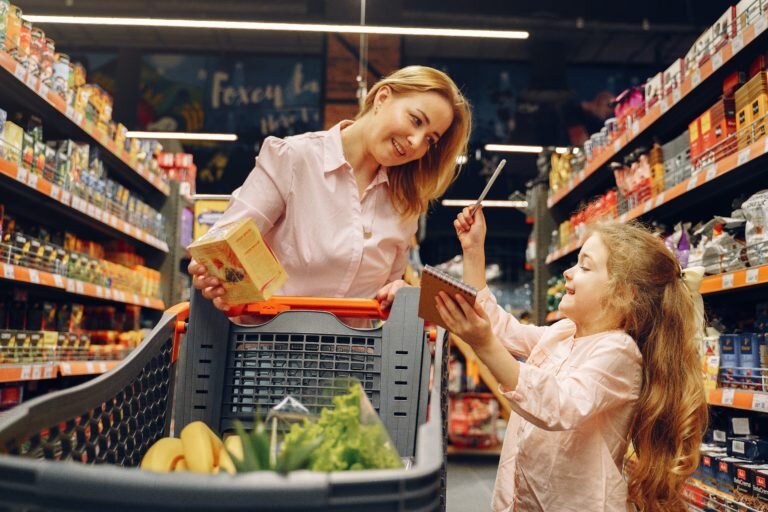For a while now, grocery shopping came in two flavors: online and offline. Offline was the $678 billion, heavyweight champion and online—a plucky underdog to be sure—but not nearly ready for prime-time.
That way of looking at things made perfect sense right up until about three months ago. Then there was COVID-19. The omnichannel retail world of the distant future suddenly came careering into the present day, stunning all that were unprepared for it (which is to say—everybody.)
We planned for a world where there would be two distinct grocery shopping channels. Each would be favored by a unique demographic, with a unique set of expectations. Brick and mortar stores would hold steady or decline slightly, online would gradually rise, and the two would only rub elbows at the fringes. Instead, we find ourselves in a world where there is nothing gradual about the way online grocery shopping is expanding. What’s a grocer to do?
Supply-chain management must work online as well as it does in-store.
New shopping modes, familiar expectations:Online grocers are tickled to suddenly be a main event contender, after years of struggling on the undercard. But online grocery’s newfound fame as the first option for many grocery shoppers comes along with some baggage—shoppers expect online performance to deliver exactly what they can get in-store. This usually shows up in two areas:
1. INVENTORY:
The problem: Supply-chain management must work online as well as it does in-store. In-store, what-you-see-is what you get. If an item is out-of-stock, customers can’t put in their cart. But online, it is all-too-common that shoppers are informed of order shortages at the point of check-out or delivery, if at all! When online grocers try to offer substitutes, they often fail, sometimes comically.
The solution: Online grocers need robust mechanisms to monitor the quantity and quality of their stock to make sure that customers will be served well. If a product is dangerously low in stock, it should not be possible to put in a cart in the first place. Tweak your presentation algorithm to favor items that you know you can deliver without fail. But when a delivery failure can’t be avoided, offering smart substitutions with A.I. is a great way to build customer trust and satisfaction.
“For items that truly are unavailable, let user intent guide your substitutions,” wrote Halla’s own Henry Michaelson in a recent article for Total Retail, “How does a shopper plan to use those organic, free-range eggs that just ran out? Does her selection of ham and grated cheddar tell you that these eggs are for high-protein breakfasts? Then maybe turkey sausages would be a good substitution. Or does gluten-free flour and sugar-free chocolate suggest that she’s baking a healthy cake? In that case, offer a plant-based egg substitute.”
Either way—why not automatically add the customer’s originally desired item to a personal “wish list” in their account, so that it is easy for them to buy next time. You can even go one step further and send them a text message or email with one-click order capability when the product is back in stock!
Imagine a store with 3,000 skus that are perfectly tailored to your tastes, and yours alone.
2. EXPERIENCE:
The problem: We talk a lot about the distinction between shopping and buying. In a physical store, this is all about presentation—the sights, smells, and textures of the fresh section, neatly organized bottles of wine declaring their national heritage, endcaps of exciting products on promotion, and endless aisles of choices, presented in bottles, boxes, bags, cans, and containers. In-store shopping is as much about discovering new ideas and inspiring tasty new cooking opportunities as it is about merely stocking up. That’s hard for online grocery shopping to compete with.

The solution: Imagine a store with 3,000 skus that are perfectly tailored to your tastes, and yours alone. It would be easy—exhilarating even—to shop there. Every time you entered, you would encounter delightful new products that matched your tastes, dietary habits, budget, and family needs. You would feel…understood. Frankly, why would you shop anywhere else?
Technology empowers grocers to build such a store for each and every one of your customers. Online, you don’t need to replicate the endless aisles and tens of thousands of SKUs that you carry in store. You just need to learn about your shoppers, and to have A.I. that understands food and how different types of food interact with each other.

For example, let’s say that a shopper rarely if ever buys any meat items, but never fails to put tofu in their cart. It’s an easy guess that his or her household are vegetarians or vegans, right? Well, there are many more interesting protein sources which are neither meat nor tofu. The shopper’s “personal store” can now be filled with products and ingredients for vegetarian dishes. You can even offer recipes, seasonal selections, wine pairings, and brand-sponsored content that is custom-tailored for this shopper’s personal store.
The challenge is clear. To maintain its momentum after the initial shock of COVID has died down, online grocery needs to up “up its game” fast. Online grocers can keep up their winning streak with the help of technology. Make sure that delivery of both product and shopping experience are superior, and customers will wonder how they ever shopped without you.

